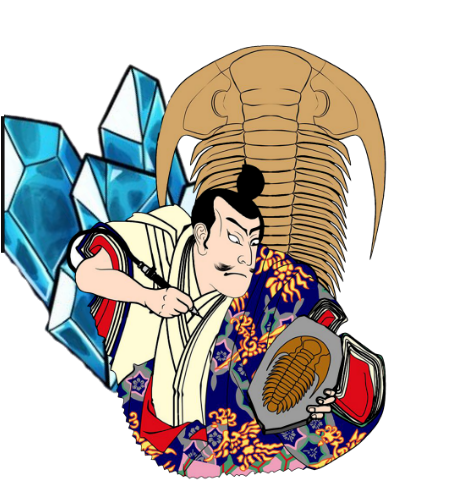Blog

In October 2024, Pal-Venn organized an extraordinary expedition to explore the fossil-rich sites in the Zagora and Maider regions of northeastern Morocco. Focusing on the renowned Ordovician layers, participants had a unique opportunity to immerse themselves in one of Earth's oldest and most biologically significant periods.
Purpose of the Trip
The trip aimed to provide paleontology enthusiasts direct access to world-class fossil sites, particularly the Fezouata Lagerstätte from the Ordovician, famous for its exceptional preservation of early marine ecosystems. Alongside scientific exploration, the expedition sought to offer participants a glimpse into Morocco's cultural and geological wonders.
Highlights of the Trip
Marrakech to Zagora – Crossing the Atlas Mountains
The journey began early on October 15 with breakfast in Marrakech. While Moroccan tea is excellent, coffee is not their specialty—luckily, Maximo brought his own supply to ensure a proper morning coffee for everyone.
After breakfast, our guides and drivers arrived to start the trip. Our leader was Abdelaziz Oumouhou, a highly regarded fossil preparator with extensive experience in fossil collection. Abdelaziz, a trusted friend and expert, was always ready to assist.
Our goal for the day was to cross the Atlas Mountains and reach our hotel in Zagora by evening. Along the way, we stopped at a fascinating site about 10 kilometers from Ouarzazate, featuring stromatolite layers from the Ediacaran period. This stop offered a glimpse into life on Earth over 500 million years ago.
The journey took us through breathtakingly diverse landscapes, from winding mountain roads to expansive arid plains. By sunset, we arrived at Zagora and checked into Hotel Dar Susane, resting in preparation for the days of exploration ahead.
Exploration of the Ordovician in Fezouata
The day began with a simple breakfast at the hotel before boarding our 4x4 vehicles. After stocking up on water and lunch supplies, we set off. Our field lunches were basic but practical: flatbread, a can of sardines, some cheese, and fresh fruit—the perfect fuel for a day of exploration.
The Ordovician layers in Fezouata consist of greenish shales renowned for their remarkable arthropod fossils. These layers boast exceptional preservation, capturing both hard parts and soft tissues of ancient organisms. Unlike a central quarry, the fossil-rich strata span the landscape, forming rolling hills of crumbled shale.
Armed with tools and enthusiasm, we began our exploration. The first day of fieldwork was a valuable learning experience, and Aziz’s expertise quickly proved invaluable. His keen eye led to the discovery of a Cheloniellid fossil—a rare and exciting find that set the tone for the days ahead.
The following day, we visited another site where Ben Moula, a skilled fossil hunter, was actively working. His dedication and sharp eye had already yielded impressive finds earlier that day, adding to the excitement of our visit.
Exploring the Dra Valley and Harpides Layer
Leaving Zagora in the morning, we headed toward the Dra Valley to visit two Ordovician sites where local miners search for trilobites from the Tremadocian layer, known as the Harpides layer. These strata are rich in trilobite species such as Asaphelus, Harpides, and Parvilichas.
At one site, we worked alongside a local miner, enjoying the sunny weather as we dug for fossils. It was a hands-on and rewarding day, offering opportunities to learn from the locals and their techniques.
On the way to Alnif, we stopped at Ben Moula’s shop, where he showcased fossils he and his father had collected from Fezouata. This was a great chance to see some of the region’s highlights up close.
Middle Cambrian Layers at Tinejdad and Ordovician Starfish
On another sunny day, we visited the Middle Cambrian layers near Tinejdad. This site, known for Paradoxides trilobites, also occasionally yields other fascinating fossils.
Later, we briefly stopped at Ait M’Hand, where local miners dig an Ordovician layer known for beautifully preserved starfish and echinoderms.
Erfoud and Rissani – From Fossil Workshops to Ancient Markets
In Erfoud, we visited Aziz’s workshop, where he and his brother Lahcen prepare extraordinary fossil collections. Their craftsmanship was remarkable, and some of us purchased stunning trilobites as souvenirs.
Later, we explored the authentic Rissani market, once a caravan hub connecting Timbuktu to the Silk Road, before continuing to other fossil sites and retiring to Dar Lajdoud for the night.
Final Days: Devonian Fish and Farewell
The last days featured Devonian fish fossils and archaeological finds, including Paleolithic tools near M’rakib. We concluded our expedition with visits to Afferdou mud mounds, famous for their rich fossil content.
The return journey was challenging, with some participants affected by illness and adverse weather. Despite this, we arrived in Marrakech to enjoy one final night at the vibrant Jemaa el-Fna market before heading home, marking the end of a rewarding expedition.

